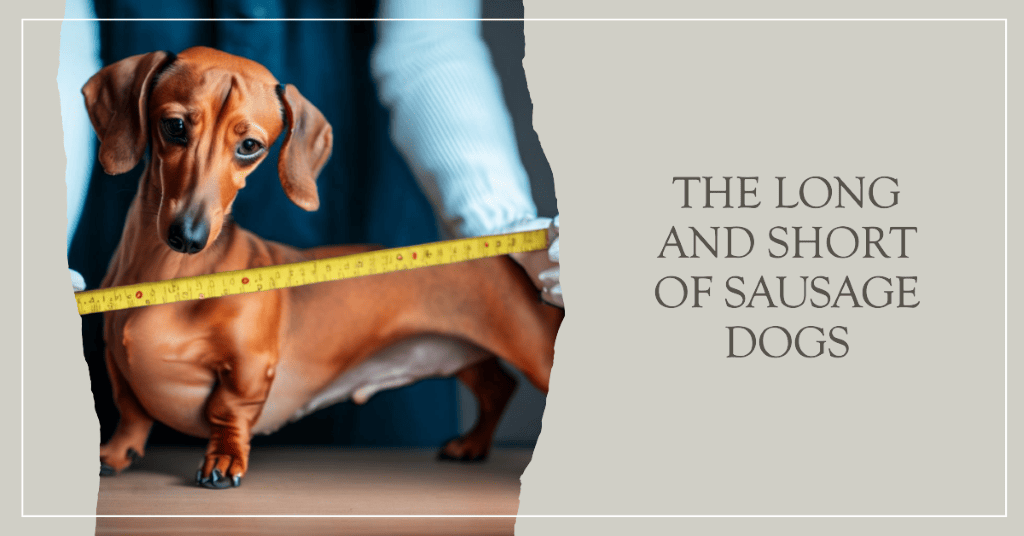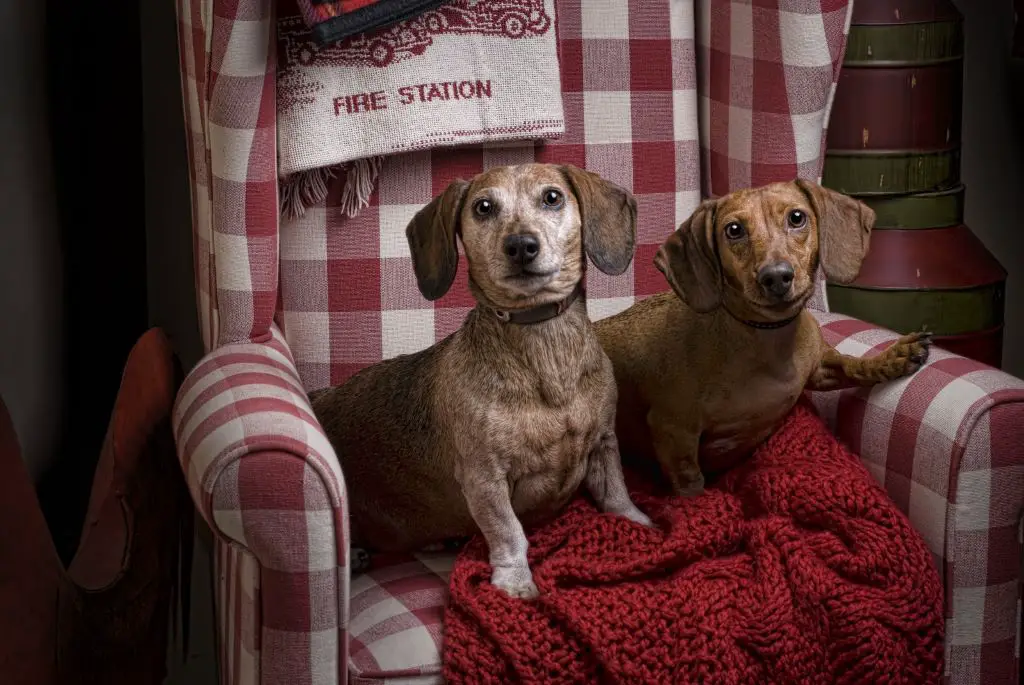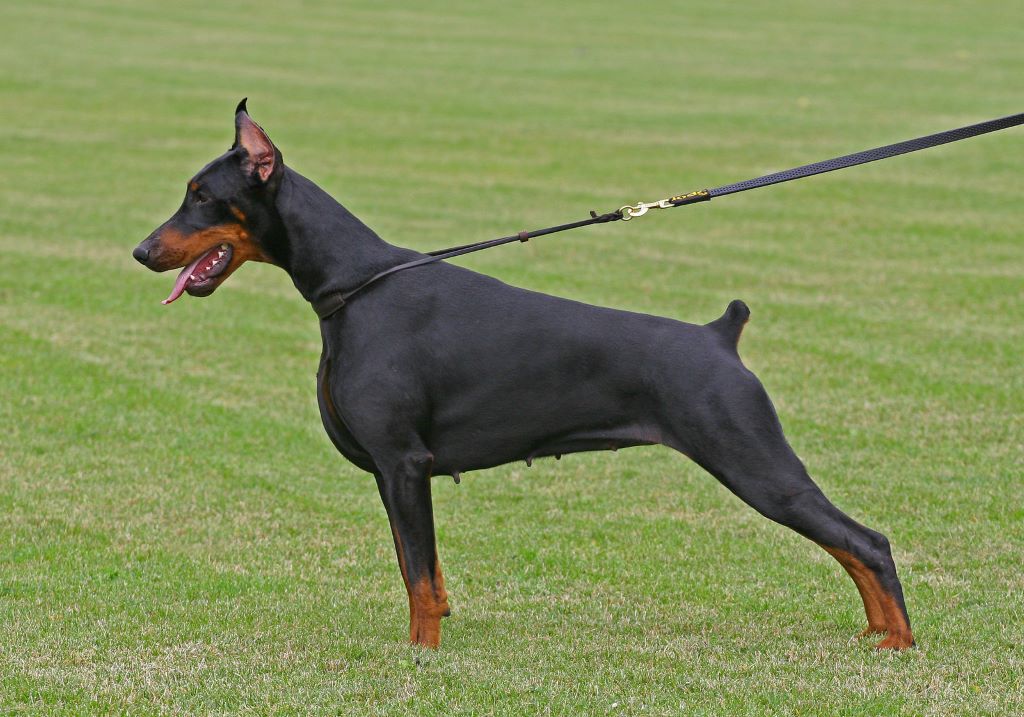Wiener dogs, also known as Dachshunds, are a unique breed of dog with a long body and short legs. This characteristic physical feature has been a topic of curiosity for many dog lovers. Why are wiener dogs so long? What is the purpose of their elongated bodies? In this article, we will explore the origins of the Dachshund breed and the role of genetics in their length.
The Dachshund breed originated in Germany in the 16th century and was primarily used for hunting badgers. Their long body and short legs allowed them to enter into badger dens and flush out the prey. Over time, the breed evolved to become a companion dog, but their physical characteristics remained the same.
The Dachshund’s unique body shape has made them a beloved breed among dog enthusiasts, but it has also raised questions about their health implications. In the following sections, we will delve deeper into the science behind the Dachshund’s length and explore the care needed for these special dogs.
Key Takeaways
- The Dachshund breed originated in Germany and was primarily used for hunting badgers.
- The Dachshund’s long body is a result of genetics and was developed to aid in their hunting abilities.
- Caring for a long Dachshund requires special attention to their spine and weight management.
Origins of the Dachshund Breed
The Dachshund breed, also known as the Wiener dog or sausage dog, is a small, long-bodied dog with short legs and a friendly disposition. The breed originated in Germany in the 16th century and was initially bred for hunting badgers, rabbits, and other small animals that burrow underground.
The name “Dachshund” comes from the German words “dachs,” meaning badger, and “hund,” meaning dog. The breed was developed to have a long, narrow body that could easily fit into burrows and tunnels, allowing them to chase and capture their prey.
The Dachshund’s unique body shape is a result of selective breeding. German breeders used a gene mutation called chondrodysplasia to create the breed’s short legs and long body. This mutation causes a form of dwarfism that affects the length of the bones in the legs, resulting in a dog with a short stature and a long body.
Over time, the Dachshund became a popular companion dog due to its charming personality and unique appearance. The breed was first recognized by the American Kennel Club in 1885 and has since become one of the most popular dog breeds in the world.
In summary, the Dachshund breed was developed in Germany for hunting small animals underground. Their long, narrow body shape was created through selective breeding using a gene mutation called chondrodysplasia. Despite their origins as a hunting dog, Dachshunds have become a beloved companion breed worldwide.
The Role of Genetics in a Dachshund’s Length
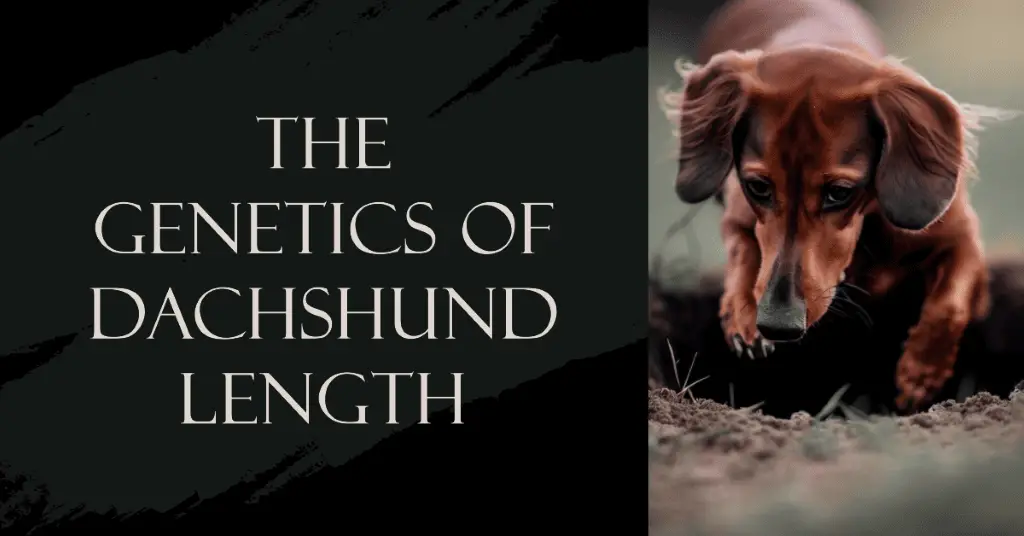
The unique body shape of Dachshunds is largely attributed to genetics. Specifically, the breed’s elongated body is the result of a genetic mutation that affects bone and cartilage growth.
Dachshunds have a form of dwarfism called chondrodysplasia, which causes their legs to be shorter than those of other breeds. This condition results in the characteristic long, low-to-the-ground body shape that is ideal for hunting small game.
The chondrodysplasia mutation causes the overproduction of a protein that affects growth during fetal development. It also affects the development of the dog’s limbs, resulting in shorter legs and a longer body.
While Dachshunds are not the only breed with chondrodysplasia, they are one of the most well-known breeds with this genetic condition. Other breeds with similar mutations include Basset Hounds, Corgis, and Pekingese.
In conclusion, genetics play a significant role in a Dachshund’s length and unique body shape. The chondrodysplasia mutation causes shorter legs and a longer body, making Dachshunds well-suited for their original purpose of hunting small game.
The Purpose of the Dachshund’s Long Body
Hunting and Burrowing Abilities
The dachshund’s long body and short legs were selectively bred for their hunting and burrowing abilities. Their unique physique allowed them to fit into narrow tunnels and burrows, making them excellent at hunting small game like badgers, foxes, and rabbits. Their long, low-to-the-ground bodies enable them to move easily underground, while their short legs and powerful chests give them the strength and agility to dig and maneuver through tight spaces.
The dachshund’s long body also helps them to track and pursue prey. Their keen sense of smell allows them to follow scents through dense underbrush and across rough terrain. Their long bodies enable them to keep pace with their prey, even when it tries to escape through narrow tunnels or burrows.
Heat Conservation
Another purpose of the dachshund’s long body is heat conservation. Their elongated shape allows them to conserve body heat more effectively than other breeds. This is especially important in colder climates or when hunting in the winter months. The dachshund’s low-to-the-ground body also allows them to stay cool in warmer weather, as they are less exposed to the sun’s rays.
Health Implications of a Dachshund’s Length
Dachshunds are known for their unique body shape, which includes a long spine and short legs. While this characteristic may make them cute and endearing, it can also lead to certain health implications that owners should be aware of. In this section, we will discuss two primary concerns related to a dachshund’s length: spinal issues and obesity risks.
Spinal Issues
The elongated spine of a dachshund can make them more susceptible to spinal injuries and other related issues. The breed is prone to a condition called intervertebral disc disease (IVDD), which occurs when the discs between the vertebrae of the spine become damaged or herniated. This can lead to pain, paralysis, and even the need for surgery.
To prevent spinal issues, it is important to take steps to protect your dachshund’s back. This includes avoiding activities that put strain on the spine, such as jumping from high surfaces or climbing stairs. Providing a supportive bed or crate can also help alleviate pressure on the spine while sleeping.
Obesity Risks
Dachshunds may be small in size, but they still require regular exercise and a healthy diet to maintain a healthy weight. Their long body shape can make them more prone to obesity, which can exacerbate spinal issues and lead to other health problems.
To prevent obesity in dachshunds, it is important to provide them with a balanced diet and regular exercise. Avoid overfeeding and provide healthy treats in moderation. Daily walks and playtime can also help keep your dachshund active and healthy.
In summary, while a dachshund’s long body may make them adorable and unique, it also comes with certain health implications. Owners should be aware of the risks associated with spinal issues and obesity and take steps to prevent these problems from occurring. With proper care and attention, dachshunds can live long, healthy lives.
Caring for a Long Dachshund

Long-haired Dachshunds are adorable and unique dogs. However, they require special care to keep their coat healthy and prevent health problems. In this section, we’ll go over some important factors to consider when caring for your long Dachshund.
Proper Nutrition
Proper nutrition is crucial for maintaining your long Dachshund’s health. Feeding them high-quality dog food that meets their nutritional needs is essential. Long Dachshunds are prone to obesity, so it’s important to monitor their food intake and avoid overfeeding them.
When choosing dog food for your long Dachshund, look for brands that use high-quality ingredients and avoid fillers and artificial preservatives. You may also want to consider a breed-specific formula that meets the unique needs of Dachshunds.
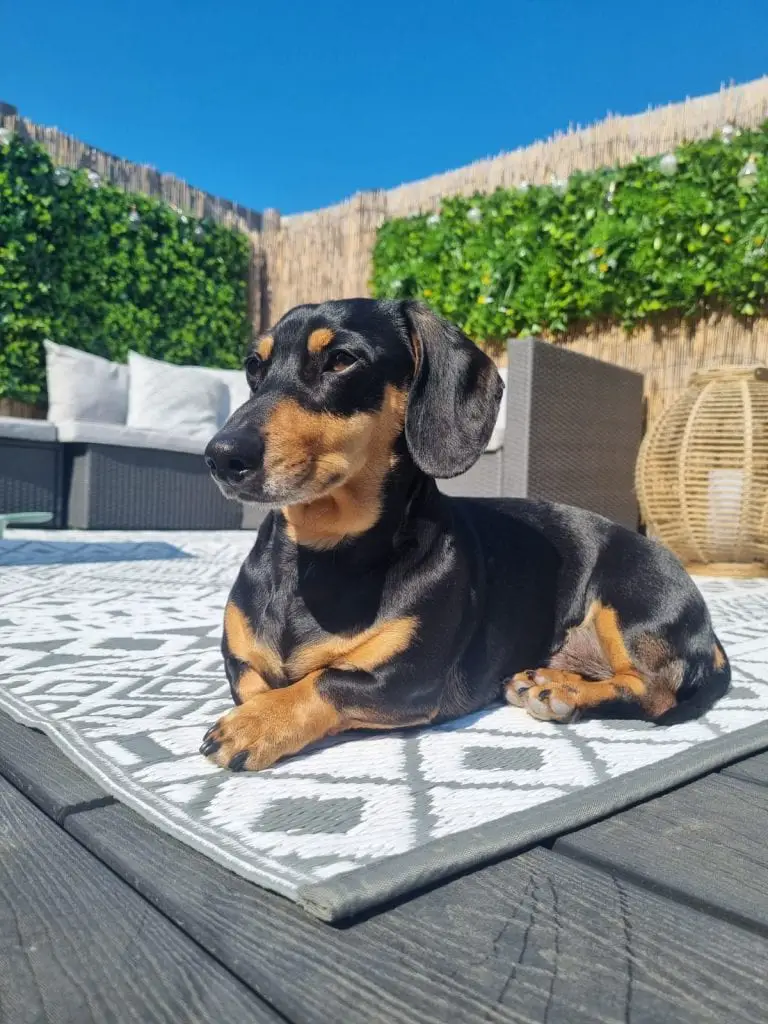
Unlock Better Skin & Joint Health For Your Dachshund
Regular Exercise
Long Dachshunds need regular exercise to maintain their weight and overall health. However, it’s important to be mindful of their long back and short legs, which can make them more prone to back problems and injuries.
Low-impact exercises like walking and swimming are great options for long Dachshunds. Avoid activities that require jumping or running on hard surfaces, as this can put strain on their back.
Routine Vet Check-Ups
Regular vet check-ups are essential for maintaining your long Dachshund’s health. Dachshunds are prone to certain health problems, including back problems, dental issues, and obesity.
During vet check-ups, your vet will perform a physical exam and may recommend additional tests or procedures to monitor your dog’s health. Regular dental cleanings and weight checks can also help prevent health problems down the line.
By following these tips, you can help keep your long Dachshund healthy and happy for years to come.
Conclusion
In conclusion, the reason why wiener dogs are so long is due to their original purpose as hunting dogs. Their long bodies were bred to allow them to easily crawl into burrows and tunnels to hunt badgers and other small animals. German breeders used a gene mutation called chondrodysplasia to stunt the growth of their legs, resulting in their short legs and long bodies.
But it’s not just their bodies that make them unique. Wiener dogs also have broad, barrel-shaped chests that were specifically bred to hold more air in their lungs while underground. This allowed them to stay underground for longer periods of time without needing to surface for air.
Despite their unusual appearance, wiener dogs are a beloved breed with a loyal following. Their long bodies and short legs make them adorable and endearing, and they are often kept as companion pets rather than hunting dogs.
Overall, the reason why wiener dogs are so long is a result of centuries of selective breeding for their hunting abilities. While their hunting days may be over, their unique appearance and charming personalities continue to make them a popular breed among dog lovers.

